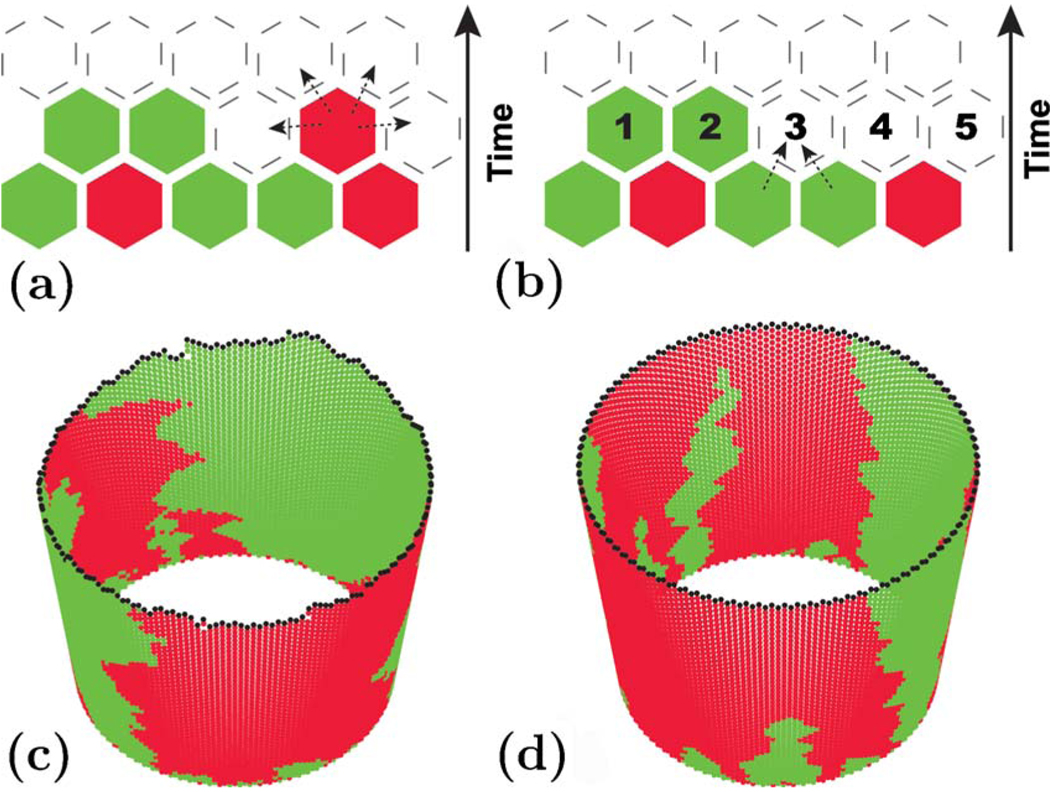FIG. 2.
(Color online) An illustration of the two models of a growing front. (a) and (c) Illustration of the model with a rough undulating front, which is a natural result of an unconstrained two-dimensional growth. (b) and (d) Illustration of the model with a flat front, which is constrained to have no lateral undulations to simplify the analytical analysis. The blank hexagons represent empty sites, and different colors of the occupied hexagons represent different alleles. (a) The model of an undulating population front. The highlighted hexagon is a randomly chosen cell that can reproduce and deposit an identical offspring in any of its four empty nearest-neighbor sites (shown with arrows) with equal probability. (b) The model of a one-dimensional habitat, where each row represents a generation. Thus, each row is completed before moving on to the next one, so an empty site can be filled only by an offspring of one of its nearest neighbors in the previous generation (shown with arrows). Both (a) and (b) show the effects of genetic drift (sampling error) when, e.g., the second from the left cell in the bottom row leaves no offspring. Such events lead to coarsening seen in (c) and (d). (c) and (d) Single simulation runs for models in (a) and (b), respectively. A population of 100 cells was wrapped around a cylinder to illustrate periodic boundary conditions used in this paper. Note that in (d) the front is flat, whereas in (c) it is rough. This roughness affects some aspects of the shapes of the monoallelic domains shown in (c): a domain boundary followed from its lowest point to its highest point always goes up in (d) but, in (c), it sometimes goes down. As discussed by Hallatschek et al. (2007), domain walls are expected to wander more vigorously in (c) than in (d). Despite the apparent differences, both models exhibit the same qualitative behavior.

